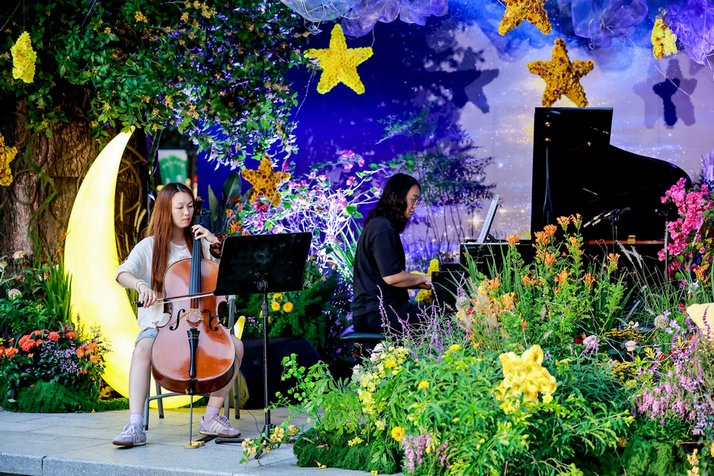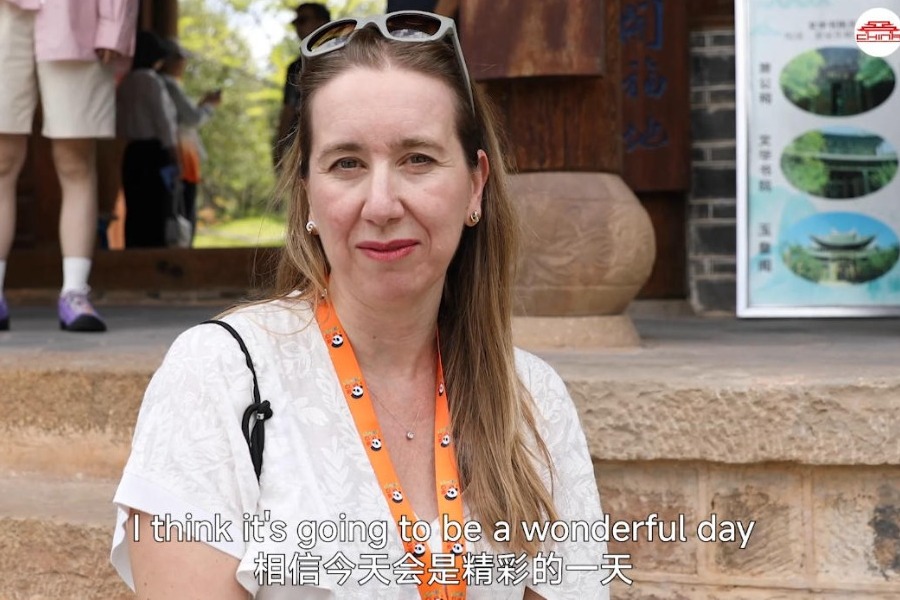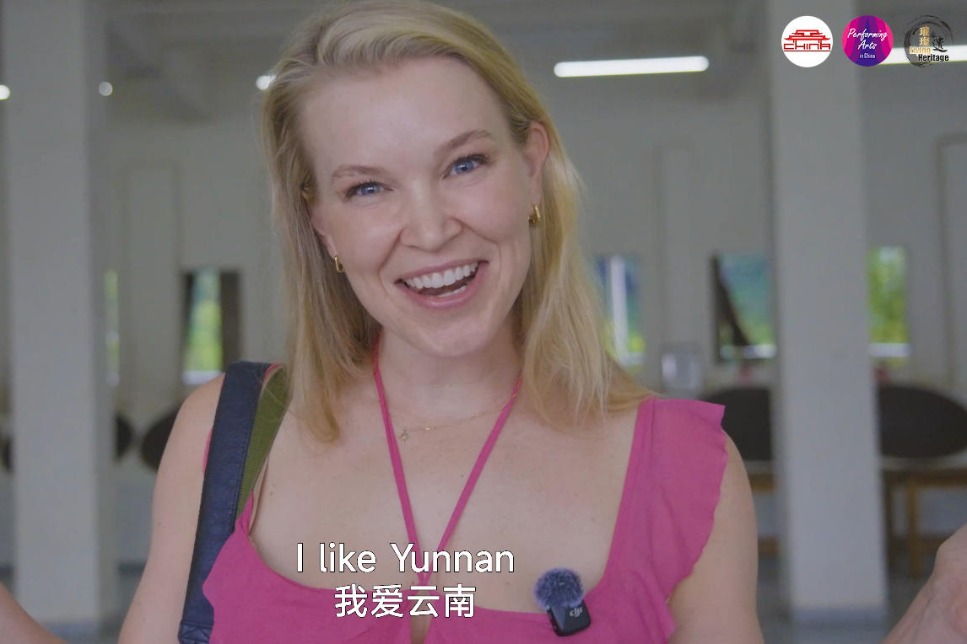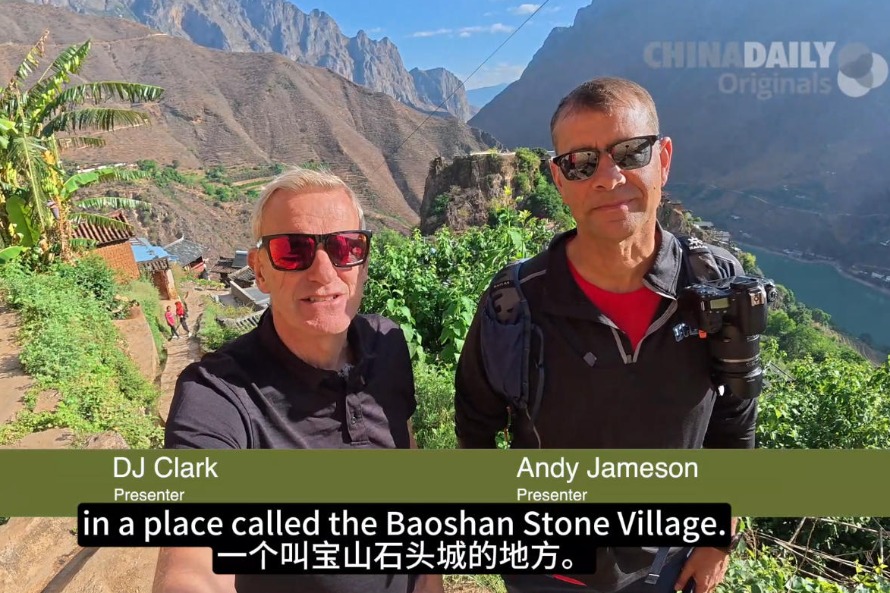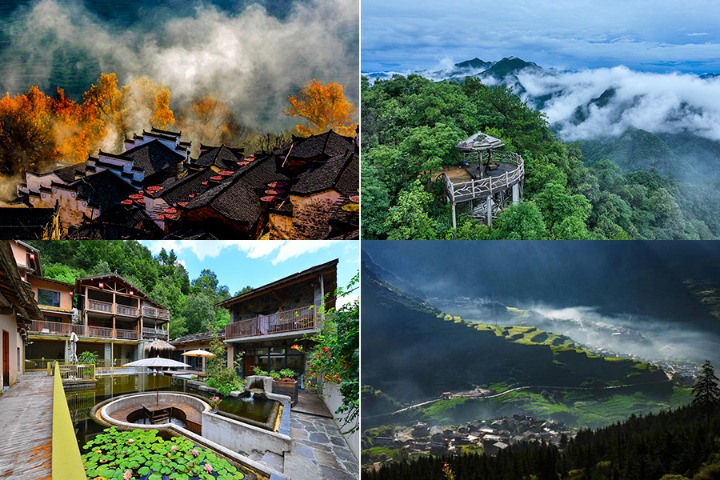Illustrator inspires China’s slow-travel shift through the Alpine mountains


When illustrator-turned-travel blogger Tintin first began sharing her travel sketches online, she never imagined they would one day bring her to the Alps. This summer, she and her partner Daniel Ye joined a small group of Chinese content creators invited by the Austrian National Tourist Office to explore the country's outdoor mountain destinations, part of Europe's renewed push to reconnect with Chinese travelers in the post-pandemic era.
Unlike the whirlwind "seven countries in 10 days" tours that once defined outbound Chinese travel in Europe, the new focus is on depth, authenticity and personal connection.
Tintin's feed, which blends delicate hand-drawn sketches with Ye's cinematic travel videos, reflects that shift.
"My audience wants to see the world through someone's eyes, not just through a camera lens," she said. "They want to know what it feels like to be there."
A professional illustrator for a decade, Tintin stumbled into travel content creation by accident. She began sketching scenes during her holidays, a cafe corner in Melbourne, a mountain path in Japan, and uploading them to social media. And her followers responded instantly.
"People would tell me my drawings made them slow down and imagine being part of that moment," she said. "That's when I realized art could make travel more personal."
Together, Tintin and Daniel now work as a creative duo, one sketching, the other filming and editing, turning each trip into a blend of art and storytelling. Their videos often feature split-screen compositions: on one side, Daniel's sweeping travel footage; on the other, Tintin's pen gliding across the page. The results, she said, let audiences see both "the real and the imagined", a style that sets her apart in a crowded field of Chinese travel influencers.
Tintin prefers to be known by her online moniker, the name she uses on Rednote, or Xiaohongshu, one of China's most popular lifestyle and travel-sharing platforms. There, her posts attract young audiences drawn to her calm, reflective storytelling style.
As China's outbound travel market returns to strength, tourism boards across Europe are rethinking how to engage this vast audience. Many are shifting away from mass-market promotions toward targeted collaborations with micro-influencers like Tintin and Ye, whose content speaks to niche interests such as art, food, nature, and outdoor sports.
"The people following me don't want to squeeze through crowds anymore," Tintin said. "They want to find small, quiet places, and to understand the local culture in depth."
That preference mirrors broader demographic changes. While older travelers may still favor group tours, younger generations, particularly Gen Z, seek independent, experience-led journeys. They are less interested in checklist tourism and more drawn to activities: skiing in the Swiss Alps, cycling trails in Tyrol, or hiking in the Dolomites.
"Europe fits that perfectly," Tintin said. "There's history and art everywhere, but also space to breathe."
European destinations have taken note. Instead of inviting dozens of high-traffic influencers for short press trips, tourism offices now curate smaller groups and longer stays, focusing on creators who can translate culture with depth and emotion.
"When an influencer like Tintin paints a local festival or a mountain scene, it creates an emotional bridge," said Jia Shan, an Austrian tourism official involved in the campaign. "That's more powerful than a viral post."
Tintin believes the key is authentic storytelling.
"If I just post pretty pictures, people scroll past," she said. "But if I tell them how nervous I was before my first mountain bike ride, or how locals welcomed us in their village, they connect with that emotion. That's when they start thinking — maybe I can go there too."
For many Chinese travelers, such stories provide both aspiration and reassurance. Questions about safety and language barriers remain common, Tintin said, but younger audiences are increasingly willing to step out of their comfort zones, as long as they can see relatable examples online.
"People message me asking if it's safe, or if they can get by with simple English," she said. "Once they see that I managed just fine, sketchbook in hand, they feel encouraged to try."
As Chinese outbound tourism regains momentum, Europe's partnership with these new-generation influencers is proving mutually beneficial. For Tintin, each sketch is both a memory and a bridge.
"Travel isn't just about where you go," she said. "It's about how deeply you experience it, and how you share that feeling with others."




















